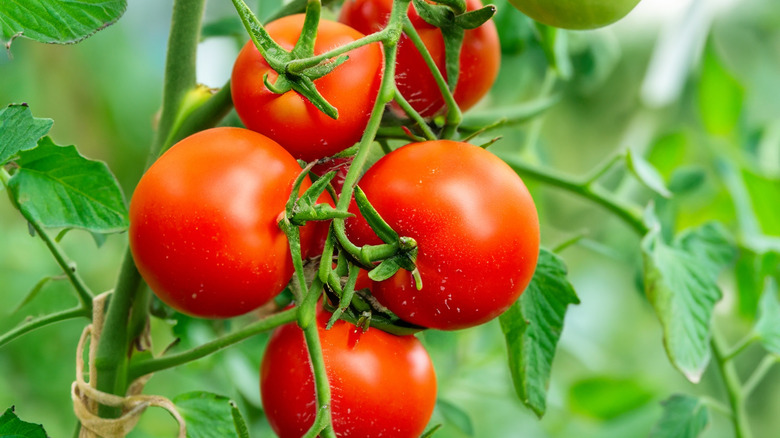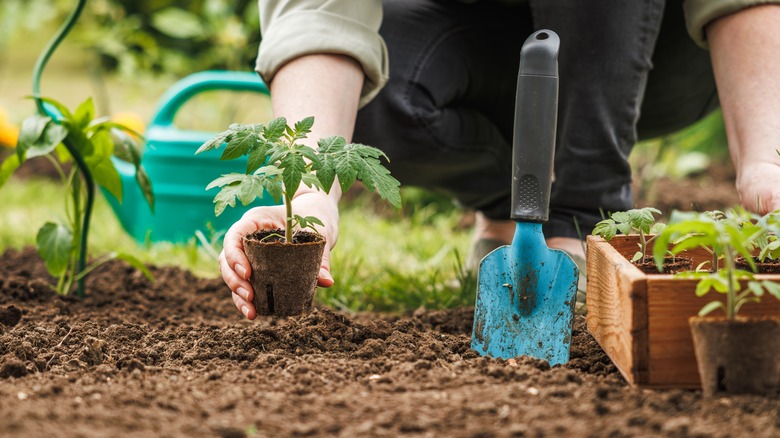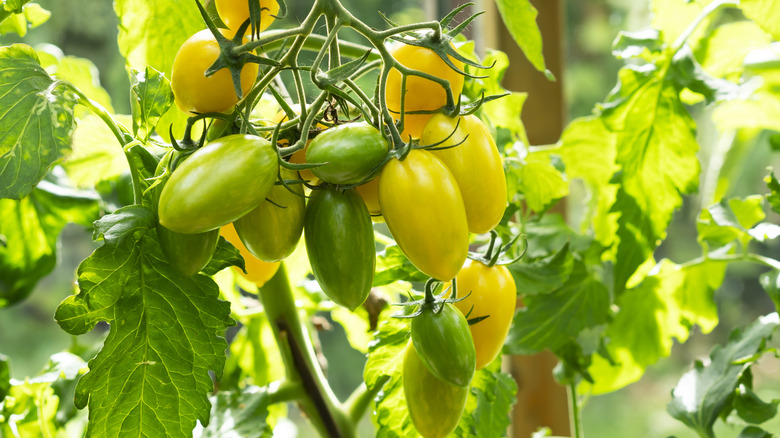The Best Tomato Variety To Propagate (& The One You Should Leave Alone)
Many people swear by how flavorful garden-grown tomatoes are in comparison to store-bought ones. This alone can be motivation enough to start your own tomato garden. However, with more than 10,000 tomato varieties to choose from, the task of selecting the right one to propagate can be extremely confusing, especially for a beginner gardener. Before you decide to simply pick a random type of tomato, it's best to learn what to look for. Generally speaking, tomato varieties can be categorized into two types: determinate and indeterminate tomatoes. If tomato propagation is your goal, then you should stick to indeterminate varieties and avoid determinate ones.
To understand why indeterminate tomato varieties are a better choice for propagation, you need to first know that most gardeners won't grow their tomatoes from seeds. This is because cutting is generally a faster and more reliable propagation method. However, cutting or pruning determinate tomatoes is generally not recommended. Because determinate plants grow and set fruits all at once and then stop producing for the rest of the season, cutting any part of the plants' stems can significantly reduce your yield. Cuttings from determinate plants also do not perform as well. In contrast, indeterminate tomatoes are considered a vining plant, which means that they will continue to grow indefinitely throughout the entire growing season. They also require constant pruning of suckers and an extensive support system to grow and flourish. Since you're pruning indeterminate tomatoes anyway, they're a much better choice for propagation by cuttings.
How to propagate indeterminate tomatoes by cuttings
Because any part of the tomato stem that touches water or soil will root, propagating tomatoes from cuttings is a very straightforward process. All you need to do is find a strong sucker or side shoot that doesn't show any sign of disease. Pick one that has no flower buds, or simply pinch them off before planting. This will focus the plant's energy on the production of leafy greens, giving you healthier plants in the long run. If you're not sure how to identify a sucker, look for the part of the stem that grows at around a 45-degree angle out of the plant's axil, the point where a leaf branch meets the main stem.
Once you have identified a sturdy sucker to plant, cut it at the base that connects it to the main stem. Then, remove all the lower leaves and branches, leaving around 4 inches of bare stem. Place the sucker in a jar of room-temperature water that only covers the lower part of the stem. To help the roots grow faster, keep your cuttings in a warm place with bright but indirect sunlight. At this stage, it's important to note that while some gardeners suggest placing more cuttings in one jar to speed up the propagation process, rooting your plants individually can prevent root tangling.
After two to three weeks, your suckers will have developed an extensive root system and become ready for transplanting. When that happens, move your healthy new plants into individual pots with good drainage and a nutrient-rich soil or compost. You might want to use coffee grounds to give your tomato plants a boost by incorporating them into the soil.
Choosing the best indeterminate tomato varieties to grow in your garden
Whether climate and soil conditions, personal needs, or flavor preferences, there are many things to take into consideration when selecting which indeterminate variety to propagate and grow in your garden. All tomatoes generally thrive in warmer weather; however, some varieties, like 'Stupice' tomatoes, can tolerate cooler conditions. Another thing to consider is how long it takes for certain varieties to ripen. Some, like 'Moskvich' tomatoes, will mature in around 60 days; others, like 'Sun Gold', will take about 70 days to mature.
The size and color of the fruit also vary greatly from one variety to another. For example, varieties like 'Ananas Noire' produce thick, bi-colored, fleshy fruits, while others like 'Sunrise Bumblebee' produce much smaller, striped cherry tomatoes. Disease resistance is also important when selecting a variety. You can find grafted options that are more resistant to disease.
You might also want to know whether what you selected is considered a hybrid or heirloom. Heirloom tomatoes are tomatoes that have been cultivated for decades in a certain area and are generally considered to be less disease-resistant. Hybrid varieties are a cross between two different varieties, and the seeds don't produce a consistent type of plant. Finally, not all varieties will be locally available, but you can still skip the tasteless tomatoes at the garden center and check plant nurseries for better options.


